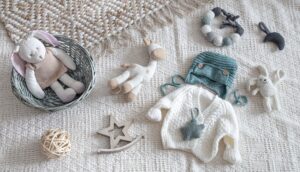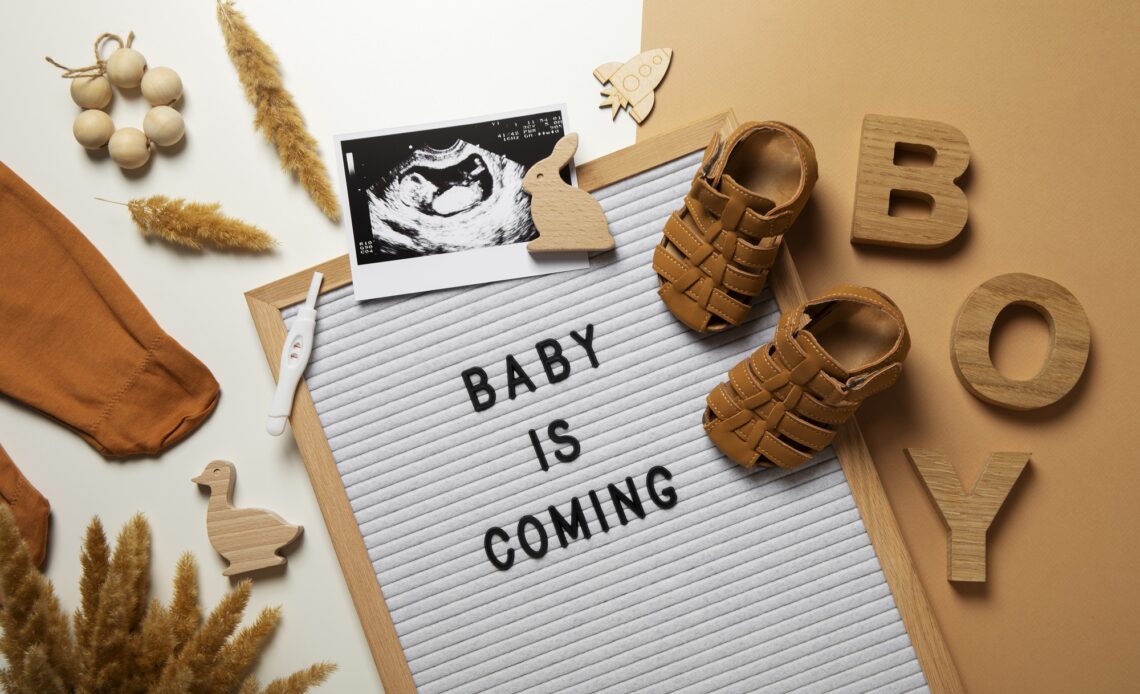Introduction
As expecting parents, preparing for the arrival of your little one can be both exciting and overwhelming. One essential step in this journey is creating a baby registry that helps you get all the items you’ll need to care for your new bundle of joy. However, for beginners, the world of baby registries can be a bit confusing. This blog post will serve as your baby registry road map, guiding you through the process and helping you make informed decisions.
Step 1: Start Early
Creating a baby registry is a pivotal step in preparing for the arrival of your little one, and starting early in your pregnancy can significantly impact the overall experience. Here’s a more in-depth look at why beginning your baby registry during the second trimester is crucial:
Research and Knowledge Gathering:
Starting early allows you to begin researching and gathering information about the multitude of baby products available in the market. This knowledge-gathering phase is essential, especially if you’re a first-time parent, as it helps you understand what items are necessary, their various features, and the brands that offer them. This understanding empowers you to make informed decisions.
Comparing Products:
With several brands and models for each baby product category, you’ll want to compare features, prices, and reviews. The more time you have, the more thoroughly you can evaluate different options. This step is crucial for ensuring that the products you select align with your preferences, budget, and specific needs.

Avoiding Stress and Rush:
Waiting until the last minute to create your registry can lead to stress and rushed decisions. The final months of pregnancy can be busy, filled with doctor’s appointments and preparations for the baby’s arrival. By starting in the second trimester, you avoid the pressure of creating your registry when time is limited and when you might be dealing with other pregnancy-related concerns.
Special Considerations:
If your pregnancy has any special circumstances, such as twins or a high-risk situation, you may need more time to plan and choose specific items. Starting early ensures you have ample time to address any unique needs that may arise during your pregnancy.
Availability and Stock:
Popular baby products can quickly go out of stock or have long waiting lists. By beginning your registry early, you increase the likelihood of finding the items you want in stock and readily available, reducing the risk of last-minute disappointments.
Space for Thoughtful Choices:
Parenthood is a significant transition, and during the early stages of pregnancy, you have the mental and emotional space to make thoughtful choices. You can carefully consider your lifestyle, your values, and the practicality of different baby products without feeling rushed. This leads to a more personalized and well-considered registry.
Gathering Support:
By creating your baby registry early, you give your friends and family ample time to review and purchase items from the list. This not only makes their shopping experience more convenient but also ensures that you receive the items you need and reduce the chances of duplicate gifts.
Step 2: Choose a Registry Platform
Selecting the right registry platform is one of the foundational steps in creating a baby registry. This choice will determine where your registry is hosted, impacting not only your experience but also that of your friends and family. Here’s a closer look at how to navigate this crucial decision:

Online Retailers vs. Dedicated Baby Stores:
There are generally two types of registry platforms to consider: online retailers and dedicated baby stores. Each has its own set of advantages and considerations.
- Online Retailers (e.g., Amazon, Target, Walmart):
-
-
- Convenience: Online retailers offer the convenience of creating and managing your registry from the comfort of your home. You can add or remove items, update your preferences, and track purchases easily.
- Vast Selection: Platforms like Amazon offer an extensive range of products, from baby essentials to a wide variety of other items. This can be beneficial if you plan to include a diverse selection on your registry.
- Ease of Shopping: Friends and family often prefer online retailers because they can shop for registry items along with other products they need, all in one place.
-
- Dedicated Baby Stores (e.g., Buy Buy Baby):
-
-
- Specialized Knowledge: These stores are dedicated to baby and infant products, so you can benefit from the specialized knowledge of the staff. They can provide guidance and insights on the best products for your baby.
- In-Store Experience: Some parents prefer the in-store experience of registering at a baby store. It allows you to physically see and touch the products, making it easier to make decisions about items like strollers and car seats.
-
Consider the Range of Products:
Evaluate the range of products available on the platform. Are there multiple brands and options for each category, ensuring you have a diverse selection to choose from? A platform with a broad range of products allows you to be more selective in your choices.
Ease of Use:
How user-friendly is the platform? A user-friendly interface can simplify the process of adding and managing items on your registry. It should be easy for you to navigate and for your guests to find and purchase gifts.
Completion Discounts and Perks:
Some platforms offer completion discounts, which provide you with a percentage off any remaining items on your registry after your due date. Check if the platform you choose provides such incentives or additional perks like free shipping.
Accessibility to Guests:
Consider the accessibility of the platform to your friends and family. Ensure that it’s easy for them to access your registry, either through a website, mobile app, or in-store kiosks.
Return and Exchange Policies:
Familiarize yourself with the platform’s return and exchange policies. Knowing how the process works in case you receive duplicate items or need to return something is important.
Step 3: Understand Your Lifestyle
Understanding your lifestyle is a crucial step when creating a baby registry, as it allows you to tailor your choices to the specific needs and constraints of your living situation. Here’s a more detailed exploration of why this step is essential and how it can help you make informed decisions:
Space Considerations:
- City Dwellers: If you live in a small urban apartment or a condo, space is likely limited. You’ll need to focus on essential items that are compact and space-saving. Consider items like a bassinet instead of a full-sized crib or a folding changing table. Look for multi-purpose baby gear that can maximize the use of limited space.
- Suburban or Spacious Home: If you have more space available, you may have more flexibility when it comes to larger baby products. You can opt for a full-sized crib, a roomier changing table, or a nursery with more storage. However, be mindful of how you want to arrange and utilize that space efficiently.
Mobility and Travel:
- City Living: City dwellers might be more reliant on public transportation and need baby gear that’s easy to transport, such as a lightweight stroller or a portable car seat. Look for compact and travel-friendly options.
- Suburban Lifestyle: If you have a car and anticipate more suburban or rural travel, a larger and more robust stroller, as well as a convertible car seat, might be more suitable. Consider products that cater to outdoor activities and long walks.
Storage Capacity:
- Limited Storage: City living often means less storage space. You’ll want baby products that are easy to store when not in use. Collapsible or stackable items can be valuable.
- Ample Storage: If you have a spacious home with ample storage options, you may have more flexibility in selecting items that aren’t as compact. This can include bulkier baby gear and more storage solutions for baby’s items.
Safety and Security:
- City Dwellers: Living in a densely populated area might necessitate additional safety precautions. Consider baby-proofing supplies, window guards, and cabinet locks to secure your home.
- Suburban or Rural Areas: While safety is essential everywhere, you may not need as many urban-specific safety items if you live in a suburban or rural environment. Instead, focus on essentials like baby gates for stairs.
Community Resources:
- City Living: Urban areas often have more convenient access to community resources like baby classes, support groups, and rental services for baby gear. This can influence your need to purchase certain items.
- Suburban or Rural Living: In less densely populated areas, these resources might be less accessible. You may need to consider purchasing more items yourself, as alternatives like rentals might not be readily available.
Climate and Environment:
- Weather Conditions: Consider the climate of your location. If you live in an area with extreme temperatures, you’ll need to account for weather-appropriate clothing, blankets, and other baby essentials.
- Indoor vs. Outdoor: Depending on your lifestyle, you might want to invest in items for outdoor activities, such as a stroller suitable for all-terrain or a baby carrier designed for hiking.
Step 4: Consult Friends and Family
Talk to friends and family who have children to get their recommendations and insights. They can provide valuable advice on must-have items and brands. Keep in mind that what worked for one family may not work for another, so use their suggestions as a starting point.
Step 5: Create a Checklist
To avoid feeling overwhelmed, create a checklist of the different categories of items you’ll need for your baby. These categories might include:
- Nursery: Crib, changing table, bedding, and decor.
- Feeding: Bottles, breast pump, formula, and feeding accessories.
- Diapering: Diapers, wipes, diaper bag, and changing essentials.
- Clothing: Onesies, baby clothes, blankets, and sleepwear.
- Safety: Baby monitors, baby gates, outlet covers, and cabinet locks.
- Travel: Car seat, stroller, baby carrier, and travel accessories.
- Bathing: Baby tub, bath products, and towels.
- Playtime: Toys, playpen, and baby entertainment.
- Health and Wellness: Baby first aid kit, thermometer, and grooming kit.
Step 6: Prioritize Essentials
Prioritizing essential items for your baby registry is a fundamental step in ensuring that your registry is practical and tailored to your specific needs. Here’s a more detailed exploration of why this step is crucial and how it can help you create a well-balanced and effective baby registry:
Budget Management:
Prioritizing essentials allows you to manage your budget more effectively. By focusing on the items you truly need, you can allocate your financial resources wisely. This approach prevents overspending on non-essential items and helps you stay within your budget.
Realistic Preparation:
It’s important to remember that your baby’s needs will evolve as they grow. Prioritizing essentials means preparing for immediate needs and the first few months of your baby’s life. Newborns require specific items like diapers, baby clothes, feeding essentials, and a safe sleeping environment. These are the primary focus during the initial stages.
Avoiding Clutter:
Overloading your registry with non-essential items can lead to clutter and confusion. It may also result in you receiving multiple versions of similar items. Prioritizing essentials helps you maintain a clear and organized registry, making it easier for both you and your loved ones to identify the most critical items.
Maximizing Usefulness:
Prioritizing essentials ensures that you select items that will see consistent and practical use throughout your baby’s early development. For example, rather than including an excess of newborn-sized clothing that your baby will quickly outgrow, focus on a range of sizes that accommodate your baby’s growth over time.
Minimizing Unwanted Gifts:
When you prioritize essentials, you communicate to your friends and family the items that are most important to you. This guidance can help reduce the chances of receiving gifts that you may not need or want. It’s a considerate way to guide your loved ones while they shop for you.
Adaptability and Flexibility:
Prioritizing essentials allows you to adapt to your baby’s unique preferences and needs. As every baby is different, you may find that certain items that were initially considered non-essential become vital in your baby’s daily routine. This approach gives you the flexibility to adjust your registry as needed.
Extended Use Items:
Consider items that can be used beyond the newborn stage. For example, a convertible car seat can accommodate your child as they grow, providing long-term value. Selecting items with longevity can help you save money in the long run.
Safety and Health:
Safety items should be high on your priority list. This includes baby-proofing essentials like outlet covers, cabinet locks, and baby gates. Health-related items such as baby thermometers and a well-stocked first-aid kit should also be among your priorities.
Quality over Quantity:
Prioritizing essentials allows you to focus on the quality of the products rather than quantity. It’s better to have a few high-quality, well-chosen items that serve you well rather than a multitude of lower-quality or redundant products.
Step 7: Research and Compare
For each item you plan to include on your registry, research different brands and models. Read product reviews, ask for recommendations, and compare prices. Look for products with high safety ratings and positive feedback from other parents.
Step 8: Add a Variety of Price Points
Your registry should accommodate the budgets of your friends and family. Include items at different price points so that everyone can find something they feel comfortable buying. This can range from smaller essentials like pacifiers to larger items like strollers.
Step 9: Monitor and Update
Monitoring and updating your baby registry as your due date approaches is a critical step in ensuring that your registry remains relevant and helpful to both you and your loved ones. Here’s a more detailed exploration of why this step is essential and how it can contribute to a successful baby registry:
Inventory Management:
As friends and family begin to purchase items from your registry, it’s important to keep track of what has been bought and what is still needed. This helps you avoid duplicates and ensures you receive all the essential items.
Changing Needs:
Your needs and preferences may evolve as your pregnancy progresses and you learn more about what will work best for your family. Revisiting your registry allows you to reflect on any changes in your baby’s expected arrival, your living situation, or personal preferences.
Emerging Needs:
As your due date nears, you may discover specific needs that you hadn’t anticipated earlier. For example, you may realize you need additional baby-proofing items or baby care products that you hadn’t considered initially.
Seasonal Considerations:
Depending on the time of year your baby is due, you might need to consider seasonal clothing and gear. Revising your registry helps you ensure that you have the appropriate seasonal items ready for your baby.
Stock Availability:
Some products may go out of stock or become harder to find as your due date approaches. By monitoring your registry, you can identify and address any availability issues, ensuring that your loved ones can shop with confidence.
Safety Updates:
Stay informed about the latest safety recommendations and standards. This may prompt you to update your registry with safer or more recently released versions of certain baby products.
Remove Unnecessary Items:
As you gain a better understanding of your baby’s needs, you may realize that some items initially included on your registry are no longer necessary. Removing these items helps streamline your registry and prevents you from receiving items you won’t use.
Budget Adjustments:
If you’ve received generous gifts or contributions toward your baby registry, you may want to make budget adjustments. This can involve adding higher-quality or more expensive items or redistributing funds to different categories based on your evolving priorities.
Thank-You Notes:
Keeping your registry updated ensures you have an accurate record of gifts received and from whom. This makes it easier to send timely and personalized thank-you notes to express your gratitude.
Communication with Loved Ones:
Regularly updating your registry allows you to keep your friends and family informed about your changing needs and preferences. This open communication can make it easier for them to select gifts that will be truly appreciated.
Step 10: Share Your Registry
Once your baby registry is ready, share it with your friends and family. Most registry platforms provide a link or a QR code that you can share through email, social media, or printed cards. Make it easy for your loved ones to find and purchase the items you’ve carefully selected.
Conclusion
Creating a baby registry can be a fun and rewarding experience, and with this road map for beginners, you can approach it with confidence. Remember that there is no one-size-fits-all solution, and the items you choose should suit your unique needs and preferences. Happy registry building, and best wishes as you prepare for your little one’s arrival!


